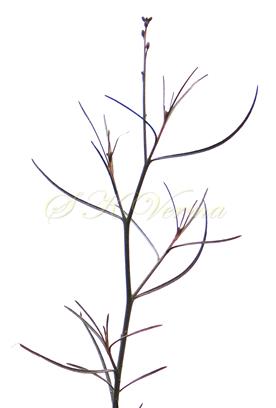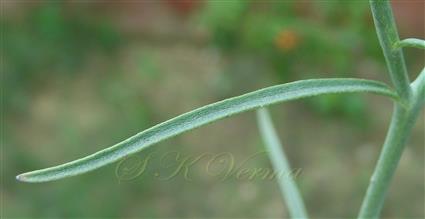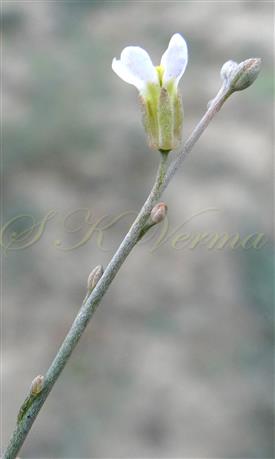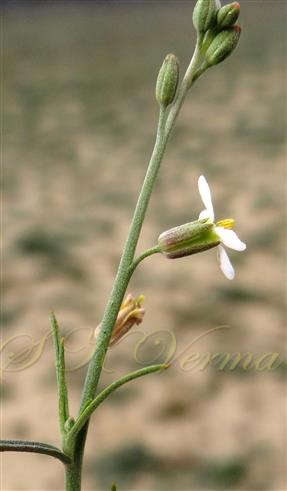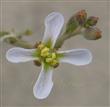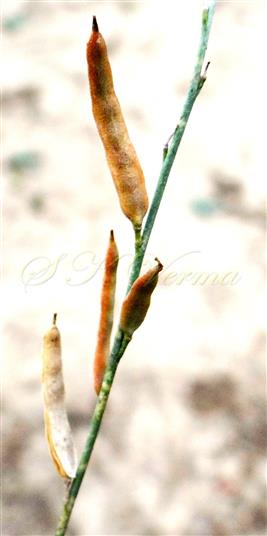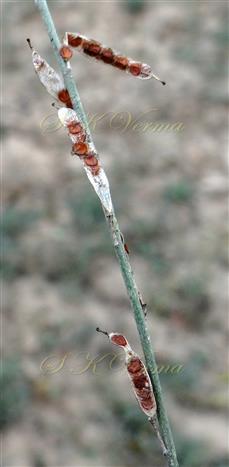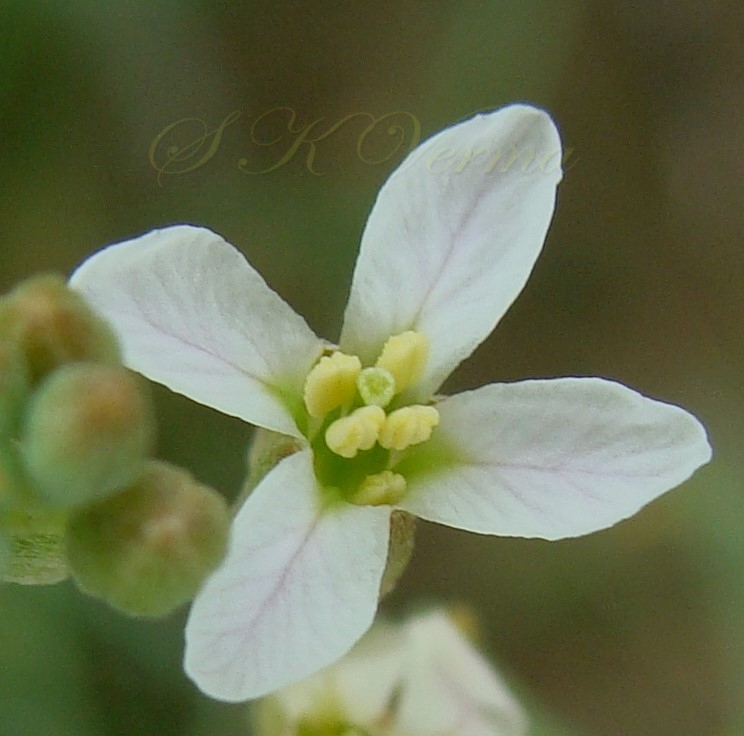FARSETIA
Farsetia
Turra, Diss. Farsetia 1. t. 1. 1765; Boiss., Fl. Or. 1: 157. 1867; Hook. f., Fl. Brit. Ind. 1: 140. 1875; Schulz in Engl. & Prantl, Pflanzenfam. ed. 2. 17 b: 486. 1936; Fl. Pak. @ eFloras.org.
Undershrubs or perennial, rarely annual herbs, often with woody bases and shrubby in appearance, much branched, erect or spreading, hoary with bipartite adpressed white hairs. Leaves linear-oblong, sessile. Racemes lax, ebracteate, elongated in fruit. Flowers small or large, pale yellow, mauve, orange or whitish, shortly pedicellate. Sepals erect, obtuse, not saccate, hoary. Petals slightly longer to about twice as long as sepals, oblong-linear, clawed, apex rounded; margin often crumpled and limb coiled inwards. Stamens 6, tetradynamous; filaments linear; anthers oblong-linear. Lateral nectar glands horseshoe-shaped, open towards inner side; median absent. Ovary oblong, 10-40 ovuled, hairy; style distinct. Siliquae oblong, compressed, narrow to broad, rarely suborbicular, canescent with bipartite appressed hairs, bilocular, dehiscent; gynophore obscure to very short but distinct; valves with distinct midvein; septum membranous, with distinct midvein and obscure reticulate venation; seeds uniseriate to biseriate, orbicular, winged, compressed.
28 species
Farsetia stylosa
Farsetia stylosa
R. Br., Narr. Travels Africa 12: 216. 1826; F. hamiltonii Royle, Illustr. Bot. Himal. 71. 1834; Hook. f., Fl. Brit. Ind. 1: 140. 1872; Fl. Pak. @ eFloras.org.
Annual to perennial herb or delicate shrublet, often woody at the base but thin, 10-60 cm long, densely hoary (grey white, silvery); stem, branches, leaves, pedicels, calyx, ovary, siliquae with bipartite appressed hairs; branches erect or subspreading. Leaves simple, linear-oblong to linear-lanceolate, variable in size, 10-72 mm x 1-1.25 mm, sessile, margin entire or involute, base cuneate to attenuate, apex acute to acuminate, strigose (covered with short stiff adpressed hairs). Inflorescence racemes, lax, 5-20-flowered, up to 30 cm long in fruit, ebracteate. Flowers bisexual, white to slightly pink, ca. 5.5 mm long, ca. 2.5-4 mm across; pedicel erect, slender, ascending, ca. 1-3 mm long, up to 6 mm long in fruit. Sepals 4, subequal, erect, oblong, 3-4(-5.5) mm x 1 mm, pubescent, lateral pair base not saccate. Petals 4, 4-6 mm x 1.1-2.2 mm, slightly longer than sepals, linear-oblong, base attenuate, margin curved inwards, apex obtuse, pinkish white. Stamens 6, tetradynamous, filaments 3-4 mm long, linear; anthers ca. 1 mm long, apex obtuse. Nectaries 2, lateral; median absent. Ovary linear, bilocular with 10-40 ovules, pubescent; style 1.5-2 mm long; stigma bilobed. Siliquae 10-25 mm x 2.5-4 mm, broadly linear or linear-oblong, compressed, beaked with persistent style, base slightly narrow at both ends; valves often slightly torulose, pubescent, midrib prominent; septum complete, membranous. Seeds up to 14, uniseriate, ca. 3 mm in diam. oblong- ovoid,
compressed, winged, brown.
Common Names: Hamilton’s Farsetia; Hiran-Chabba, Hiran-Chabbo; Farid-Booti (Punjabi)
